- About
- Intara
- Capabilities
- Advisory
- Resources
- News
- Store
02 March 2023
Into the cities: West African militaries face up to the challenge of urban warfare
West African militaries are increasingly conducting operations in urban areas, Maria Lampoudi explores how they are adapting to the terrain and equipping forces
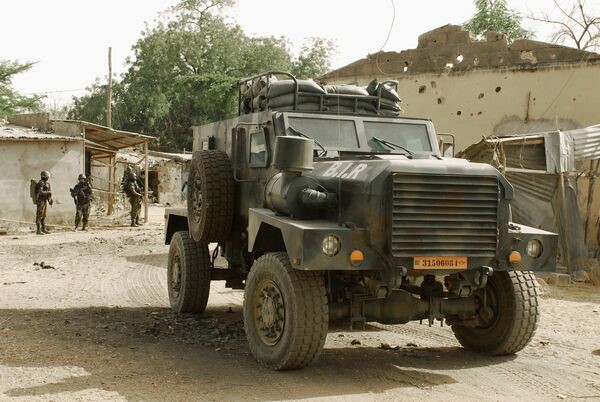
Seen here at Amchidé on the border post with the Nigerian town of Banki, this Force Protection Cougar MRAP is one of two such vehicles in service with the BIR and was part of a batch of six donated by the US to Cameroon. (Erwan de Cherisey)
On 10 May 2022 the United Nations Secretary-General's (UNSG's) annual report on the ‘Protection of civilians in armed conflict' drew attention to the “pattern of devastating harm to civilians in the immediate and long term” caused by explosives in densely populated areas. Earlier in 2022 UNSG António Guterres said that 50 million people are facing “the dire consequences of urban warfare” in 2022, with civilians representing around 90% of casualties from explosive devices globally, while the same indicator decreases to only 16% in non-urban terrain.
At the January 2022 UN Security Council (UNSC) meeting on the status of urban warfare in the world, Ghanaian Vice-President Mahamudu Bawumia underlined that the asymmetrical nature of urban warfare poses important challenges for countries performing civilian protection and critical national infrastructure protection missions. In addition, Bawumia called for the prioritisation of civilian protection in the planning and conducting of urban combat operations. Gabon's Minister of Foreign Affairs Pacôme Moubelet-Boubeya noted that “the urban area is today, for the military, the equivalent of the jungle in the 1970s” and that urban conflict causes eight times more victims than in rural areas.
Africa is home to highly dense and expanding urban areas with more than 41% of the population in Sub-Saharan Africa living in urban centres, according to data published by the World Bank in 2020. In addition, more than 64% of the urban population in Africa live in informal settlements, according to UN figures. Meanwhile, the risk of interstate conflict has been decreasing in the region, with separatism, militancy, and insurgency being the main security threats that African militaries are facing. The combination of rising urbanisation on the one hand, and low-sophisticated non-state armed groups (NSAGs) on the other, has led to a shift from rural to urban hostilities in Sub-Saharan Africa.
Non-state armed groups
According to a UN High Commissioner for Refugees (UNHCR) report published in February 2022, nearly 1.5 million people had been internally displaced in Burkina Faso, with 1.2 million deprived of access to health services and care because of attacks on health infrastructure in urban areas. In Nigeria, more than 2,000 people were internally displaced because of conflicts in urban areas in the northeastern and northwestern regions of the country in 2022 alone.
Although the impact of urban warfare on livelihoods and the state of national infrastructure is undeniable, West African armed forces' primary focus remains the containment of security threats through combat operations. According to Amnesty International, the militaries have been conducting indiscriminate attacks against civilians during counter-insurgency (COIN) efforts.
From May 2021 to April 2022 Janes recorded 676 NSAG attacks in West Africa, which resulted in 2,633 non-militant casualties. In other words, 42.7% of non-militant deaths because of NSAG attacks in Sub-Saharan Africa were concentrated in West Africa, with civilians accounting for 58.5% of non-militant casualties.
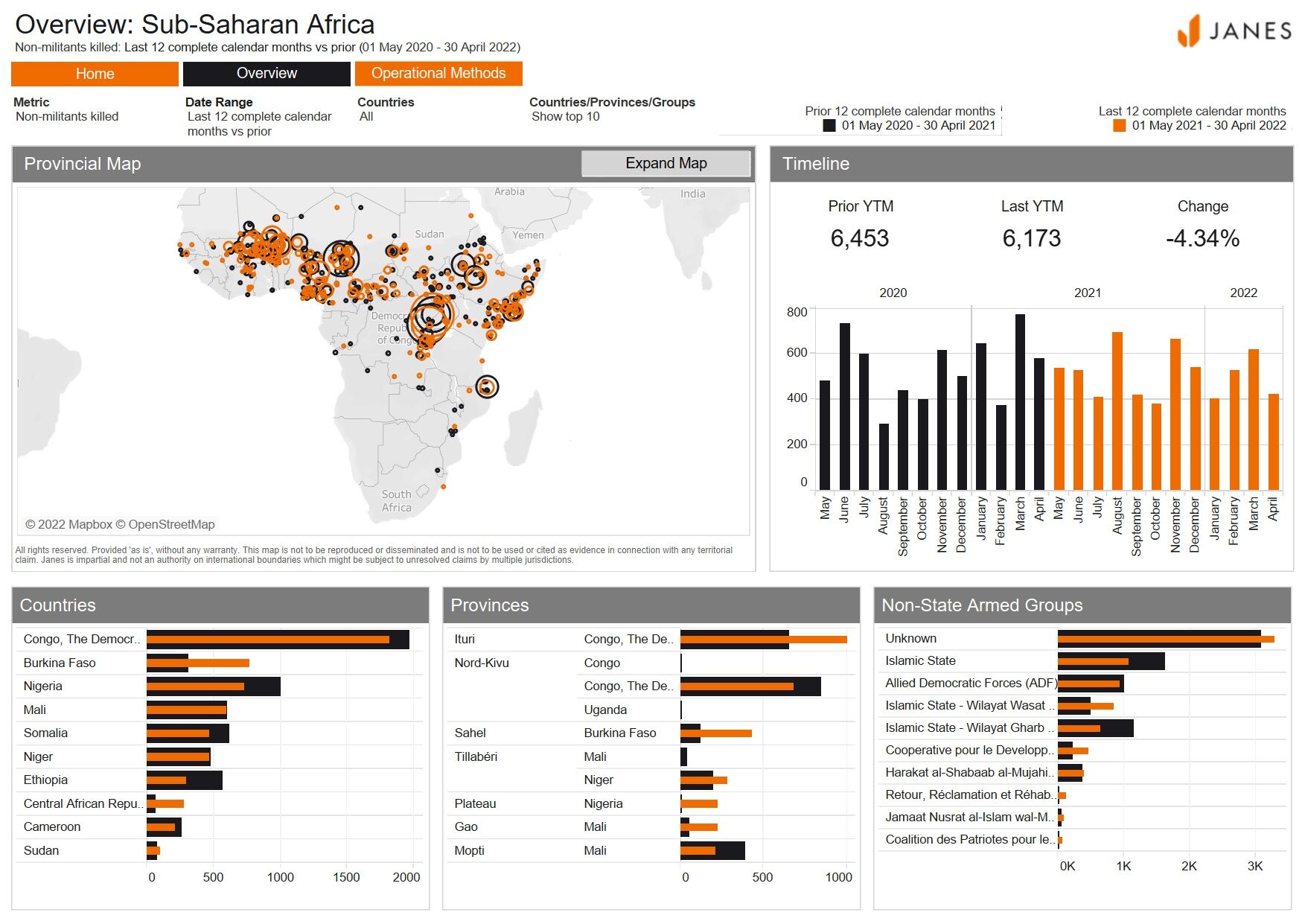
Non-militants killed in attacks in Sub-Saharan Africa: 1 May 2020 to 30 April 2021 compared with 1 May 2021 to 30 April 2022. (Janes)
From 26 February to 26 May 2022 Janes recorded 138 NSAG attacks in West Africa that resulted in 663 non-militant deaths, with civilians representing 68% of the casualties. For the same period, Janes data indicates that an additional 151 civilians suffered injuries or were arrested because of these attacks.
According to UN reports, civilians represent around 90% of casualties from explosive devices in urban terrain globally. However, Janes data indicates that the landscape is significantly different in West Africa. According to data captured from May 2021 to April 2022, more than 25% of security forces casualties occurred in attacks involving improvised explosive devices (IEDs) or vehicle-borne IEDs (VBIEDs), around four times more than civilian casualties (6.5%) from IED and VBIED attacks for that same period.
African cities as theatres of urban warfare
At the junction of West and Central Africa, the Cameroonian Armed Forces (Forces armées camerounaises: FAC) are engaged in two theatres of urban operations: the separatism crisis in the Anglophone Southwest Region and Northwest Region and the Islamist militant crisis in the country's Far North Region. Although both conflicts remain relatively low intensity for the FAC, operations are systematically conducted in the urban terrain.
In the Southwest Region, the Anglophone secessionist movement was strengthened through the 2016 protests and the establishment of the Ambazonia Defence Forces (ADF), the armed wing of the Ambazonia Governing Council (AGovC), in September 2017. In April 2021 the AGovC entered an alliance with the Indigenous People of Biafra (IPOB) and its armed wing, the Eastern Security Network (ESN). Clashes are concentrated in urban centres in three regions, Baffousam, Bamenda, and Kumbo, where both ADF and ESN carry out urban guerrilla attacks. The FAC's 5th Joint Military Region conducted Operation ‘Bui Clean' from May to June 2021, aimed at countering separatist NSAGs' operations in urban and suburban locations in Southwest Cameroon. Local media reported that the FAC faced operational challenges linked to the NSAGs' connections with residents and stakeholders in the region.
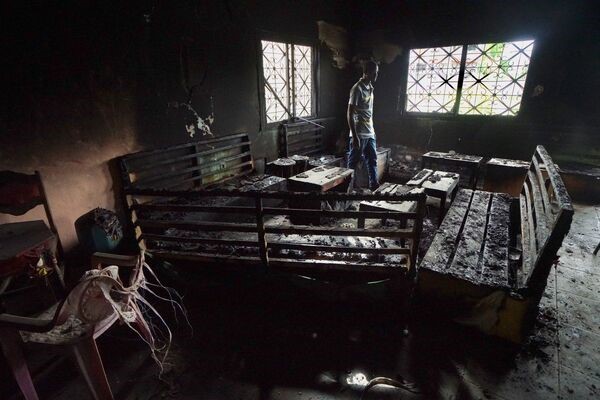
A local walks through a burnt-out restaurant that was destroyed in fighting between armed Anglophone separatists and Cameroonian military forces in Buea, Cameroon. (Giles Clarke/UNOCHA via Getty Images)
The situation is similar in the Far North Region, where, although contained, the activity of Islamist militant groups, mainly Boko Haram and the Islamic State's West African Province (ISWAP), is concentrated around villages and smaller towns. Both crises highlight a frequent challenge for government forces conducting urban warfare operations against civilian support to NSAGs.
In Nigeria, the shift from rural to urban conflict in the northern regions of the country started in 2009, when Boko Haram launched attacks against the Nigerian Armed Forces (NAF) in Borno State's capital city Maiduguri. Since then, conflict has spilled over urban and suburban centres in Borno and Yobe states and the intensity of operations remains high. Although the NAF's deployment of military and civilian joint task forces (JTFs) managed to contain Boko Haram's control over Maiduguri, suicide bomber attacks and successful IED and VBIED attacks against vehicles, mainly armoured personnel carriers (APCs), and military installations remain a prominent security threat for the NAF.
In addition, urban conflict in Nigeria's northern regions has highlighted a further challenge inherent to urban operations – limiting civilian casualties during airstrikes. Recent examples include an NAF airstrike in Yobe State in September 2021 that resulted in tens of civilian injuries and deaths and was recognised as accidental by the Nigerian military, which launched a subsequent investigation. A similar incident involved the erroneous, as admitted by the Nigerian Defence Headquarters (DHQ), bombing of an internally displaced people's (IDP's) camp in Rann, Borno State, in 2017. Furthermore, insurgency powered by the activities of IPOB and ESN in the South East region of the country have led the NAF to upscale operations there.
NSAGs appear to favour urban operations as the terrain enables them to capitalise on short-distance rapid mobility capabilities and mitigate the lack of long-distance mobility and firepower. In addition, insurgents often exploit the possibility of merging with civilians in densely populated areas. Furthermore, IED and VBIED attacks against armed forces typically cause high casualty rates.
Recognising the imperative to contain urban warfare, African militaries have undertaken efforts to improve their capabilities through specialised training, investment in equipment, and the creation of specialised units. To counter the significant IED threat, Nigeria's Counter Terrorism Centre established an Explosive Devices Analysis Office (EDAO) to monitor and track the use of IEDs in the country.
Military doctrine calls for the deployment of combined arms capabilities when operating in urban areas, often achieved through combining light and mechanised infantry units with heavy armour elements.
In addition, the role of engineer units to increase mobility in the urban terrain is important, while special operations forces (SOF) act as enablers. Furthermore, the creation and deployment of small mobile units is required.
The challenges of intelligence gathering are particularly high in urban operations, as the built-up environment limits the efficacy of intelligence, surveillance, and reconnaissance (ISR) conducted by air assets. In many cases, human intelligence arises as the best option, but proves difficult in a hostile urban terrain, as is the case in separatist conflicts in West Africa. However, as successful NAF practices have shown, the incorporation of non-military and paramilitary personnel into the defence plan, notably with the civilian joint task force (CJTF) in Maiduguri, brings operational benefits.
International training
Urban operations training is largely provided through international military co-operation partnerships and exercises. The main providers of urban warfare training in the region during the past 10 years have been the UK and the US.
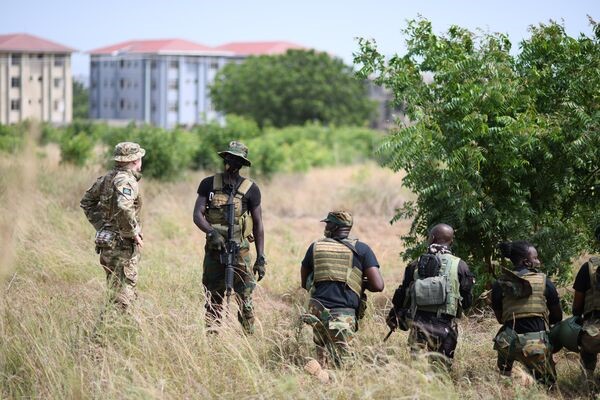
Soldiers from the British Army have been working with their Ghanaian partner force in Accra to deliver tactical and conceptual training in support of regional stability. A March 2021 four-week training programme focused on stability operations within an urban environment. (UK Ministry of Defence)
In March 2021 the British Army delivered a four-week training programme focused on stability operations within an urban environment for the Ghana Armed Forces (GAF). The programme covered tactical and conceptual training to counter threats from violent extremist organisations. Participants from the GAF included the army's 64 Infantry Battalion and 69 Airborne Force that, according to a March 2021 British Army release, are planning to expand their capabilities as an expeditionary task force.
The GAF units participated in command planning and tactical team activities, with the former training on the use of the Combat Estimate in the urban security operations' planning process. According to the British Army, the GAF tactical team “took part in progressive urban operations training, including building entry, room clearance, ladder drills, and urban platoon attacks”. In addition, the British Army delivered an ‘International Urban Operations Instructors Course' and an ‘Urban Operations Instructors Course' to the GAF in 2018–19 and 2019–20, respectively.
The US Africa Command (US AFRICOM) organises two large-scale international military exercises with the participation of West African states, including Benin, Burkina Faso, Cabo Verde, Cameroon, Chad, Côte d'Ivoire, the Gambia, Ghana, Guinea-Bissau, Niger, Nigeria, and Senegal.
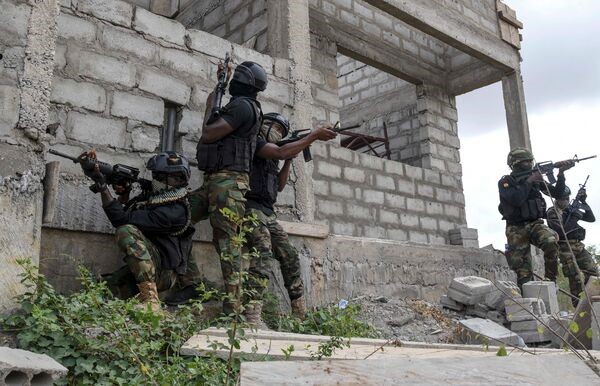
Ghanaian, Danish, Polish, and Dutch special forces conduct military operations in urban terrain (MOUT) training during Exercise ‘Obangame Express 2021', in Ghana in March 2021. (US Navy photo by Chief Mass Communication Specialist Blake Midnight/Released)
‘Flintlock' is US AFRICOM's largest annual special operations exercise. In the February 2022 iteration, participants included more than 1,300 military personnel from African and partner countries. ‘Flintlock 2022' was hosted by Senegal and Côte d'Ivoire, with the latter hosting a training activity for the first time. This iteration was focused on strengthening West African armed forces' countering violent extremism (CVE) capabilities to protect civilians in urban terrain, among others, while also exploring cross-border security co-operation.
The 2021 iteration of US AFRICOM's joint multinational exercise ‘African Lion' provided training and equipment for urban warfare, and to support pre-infiltration suppressive fires from High Mobility Artillery Rocket Systems.
National training initiatives
The GAF held its annual Land Combat Fire Power Demonstration at the Bundase Training Camp in October 2021. The exercise involved the training of an infantry battalion, command post, and other combat supporting elements intended for equipping participants with fires assets available to a battlegroup and JTF for operational deployments in urban terrain. The 2021 iteration included participants from the GAF 2nd Infantry Battalion (2BN), which formed the nucleus of the battlegroup, with supporting assets from the GAF Armoured Reconnaissance Regiment, 66th Artillery Regiment, and other combat support units of the Ghana Army.
In his opening remarks ahead of the exercise, Brigadier General Michael Amoah-Ayisi, General Officer Commanding (GOC), Southern Command, stated that the “GAF plays a lead role in land-based operations towards its constitutional mandate and the maintenance and restoration of the internal security of the country in support of the Ghana Police and Civil Authorities”.
As noted, counter-IED capabilities are a crucial operational requirement not only for the conduct of successful COIN and counter-terrorism (CT) operations in the urban context, but also for limiting security force casualties. In that respect, West African militaries have been investing in expanding their APC and mine-resistant ambush-protected (MRAP) vehicle inventories.
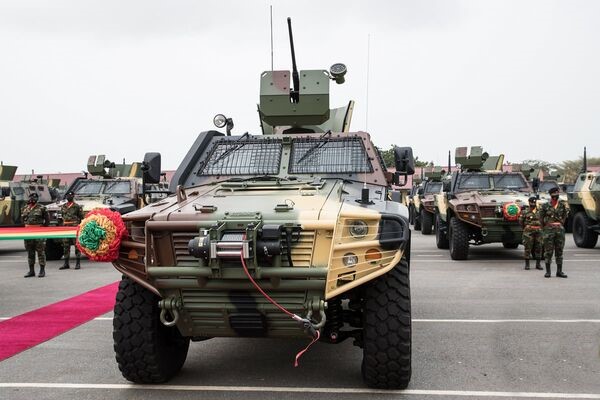
The Ghana Armed Forces fields Otokar Cobra II armoured vehicles. (Presidency of the Republic of Ghana)
In March 2021 Ghanaian President Nana Akufo-Addo handed over 40 Otokar Cobra II armoured vehicles to the GAF, stating that the vehicles were expected to improve the force's ability to contain security threats at the northern, western, and eastern borders. Although the NSAG threat in Ghana remains contained, the possibility of a spillover of Islamist militant activities from neighbouring countries remains high. The vehicles are deployed with the GAF's 155 Armoured Regiment and joined a first batch of 33 Cobra I and Cobra II vehicles delivered in 2019, which are in service with the GAF's 153 and 154 armoured regiments.
Furthermore, the UK's Foreign, Commonwealth & Development Office (FCDO) Minister for Africa Vicky Ford announced on 26 May 2022 that the country would be supplying 70 Husky armoured vehicles to the GAF to be deployed on security operations in the northern parts of Ghana. The Husky is a protected support vehicle, providing a highly mobile and flexible load-carrying vehicle.
Since the escalation of attacks against urban centres in 2015, Nigeria has been focusing on expanding its MRAP fleet for deployments in its northern theatres of operation, although not reserved to missions in urban terrain. Significant capability improvements include the integration of locally manufactured Proforce Ara and Ara 2 MRAP variants, Ezugwu MRAPs, as well as a large inventory of Chinese-built CS/VP3 MRAPs.
Integrating special operations forces
Since 2010 West African militaries have increased efforts to enhance the capabilities of their SOF in urban and suburban CT and COIN operations. This effort has been focused on establishing new units, training, and the procurement of specialist equipment.
Cameroon established its Rapid Intervention Battalion (Bataillon d'Intervention Rapide: BIR) in the early 2000s, and it continues to be the backbone of the country's special operations capability under the command of the Cameroonian Army. Units of the BIR have been deployed against Islamist militants in the Far North and in COIN operations in regions affected by the Anglophone crisis. The BIR's inventory has been upgraded with the integration of Ratel armoured vehicles in support of explosive ordnance disposal (EOD) tasks, and Mack Defense Bastion APCs that have been deployed in both theatres of urban operations.
In neighbouring Nigeria, the Nigerian Army Special Operations Command (NASOC) was established in 2014 with the express intent to conduct COIN and CT operations against the Boko Haram group. The Nigerian Army's SOF units operate with the Nigerian Navy's Special Boat Service (SBS). The units have been central to the NAF's urban missions in Maiduguri, for which they were commended by former Chief of Army Staff Lieutenant General Tukur Yusuf Buratai in 2018. The development and training of the NASOC is supported by US AFRICOM and the US Special Operations Command (USSOCOM), which have also supplied specialist equipment to the force. The SBS has received training by undisclosed NATO SOF units, with particular attention paid to small-team tactics, techniques, and procedures (TTPs), while it is also tasked with training Nigerian DHQ personnel to support urban warfare missions.
In Ghana, the establishment of the 69 Special Airborne Force (SAF) was noted in 2012, with additional CT and hostage rescue capabilities provided by the GAF 64 Regiment Special Unit, equipped to execute direct action (DA) and special reconnaissance (SR) missions. In addition to the British Army's 2021 training on stability operations within an urban environment, the unit received specialist training from the Israeli Defense Forces in 2018.
Côte d'Ivoire launched its rapid intervention battalion in 2011, and this has since been redesignated as the Special Forces of the Armed Forces of Côte d'Ivoire (Forces spéciales des Forces Armées de Côte d'Ivoire: FS-FACI). The unit upgraded its tactical ground mobility platforms through the procurement of Snake MRAPs, Toyota Land Cruiser tactical ground vehicles, and BTR‐70 APCs, while also benefitting from the introduction into service of Caiman 4×4 APCs in 2019. The latter provides a protected mobility capability for assault teams operating in urban and suburban areas in particular. Training of the FS-FACI has been provided by France, with a notable example being a joint exercise with France's 1st Marine Infantry Parachute Regiment (1er Régiment de Parachutistes d'Infanterie de Marine: 1er RPIMA) in September 2017. In addition, Côte d'Ivoire's special forces participate in US AFRICOM's annual exercise ‘Flintlock', focusing on hostage rescue operations and urban warfare TTPs.
In June 2021 Côte d‘Ivoire inaugurated its International Counter Terrorism Academy (AILCT) and the facility featured in ‘Flintlock 2022‘. AILCT was established following an agreement signed by the Ivorian and French presidents in November 2017 to build a centre that would support the development of CT capabilities in the region. Janes reported in March 2022 that the French government stated that the AILCT would have a permanent French staff and feature a CT-focused staff college, training camp with facilities approved by elite French units, and a strategic research institute.
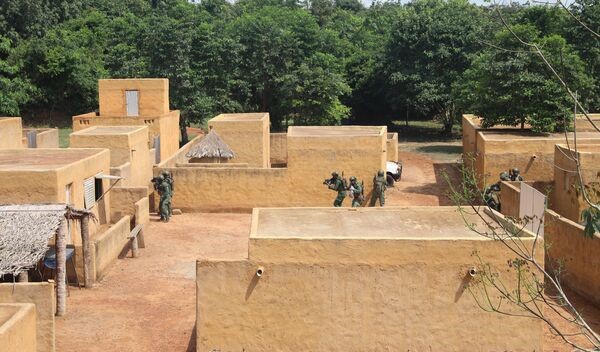
Côte d'Ivoire SOF conduct reconnaissance training alongside their French counterparts during ‘Flintlock 2022'. (US Special Operations Command Africa)
Although Burkina Faso's special forces' CT company was established in 2014, it rose to prominence in January 2016 through a joint operation with French SOF in response to a militant incident in the capital city of Ouagadougou. The unit's challenges and relative immaturity in terms of concepts of operations and TTPs led to the deployment of a French National Gendarmerie Intervention Group (Groupe d'Intervention de la Gendarmerie Nationale: GIGN) to the country in 2016, in support of the Burkinabe SOF's rapid reaction capability. Burkina Faso continues to face a rising level of instability in its urban centres, with limited deployments of specialised units.
| Comment |
|---|
| The challenges of COIN and CT missions in urban areas are expected to persist, as the continent's rapid urbanisation continues. According to a study by the Organisation for Economic Co-operation and Development (OECD), ‘Africa's Urbanisation Dynamics 2020', the continent is projected to show the most rapid urban growth rate in the world, with Africa's cities and megacities expected to host an additional 950 million people by 2050. However, preparing armed forces for more frequent and both high- and low-intensity urban operations is a pressing priority for most West African countries. Since the early 2010s, countries in the region have faced a sustained increase in NSAG attacks in urban and suburban environments that have caused thousands of casualties among civilians and security forces. The rise of IEDs and VBIEDs as a tactic employed by militants and insurgents called for the expansion of EOD and armoured capabilities in most militaries in the region, but the high level of non-militant deaths indicates that capabilities are lacking. Investment in expanding and modernising APC, MRAP, and artillery equipment seems to have yielded operational results, notably in Nigeria's fight against Islamist militancy. Beyond the sophistication of conventional capabilities and the integration of specialised forces in joint operations, as seen in Côte d'Ivoire, Ghana, and Nigeria, regional forces would benefit from the integration of modern urban warfare in their respective doctrines. International training efforts seem to provide the main corpus of urban missions' TTPs, while national and regional training initiatives are limited. Furthermore, the deployment of military units in urban environments in the region is often accompanied by reported indiscriminate killings, incidents of torture and rape, and limited post-conflict urban reconstruction plans. Apart from the direct impact on livelihoods, poor performance in respect to human rights seems to take a toll on the military's perception by local populations – an important factor in urban operations. Therefore, the integration of training and the establishment of human rights' violations monitoring seems imperative. |
Into the cities: West African militaries face up to the challenge of urban warfare
 Details
Details